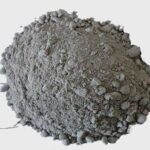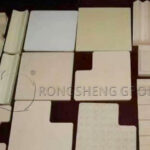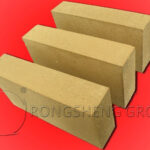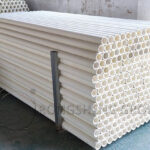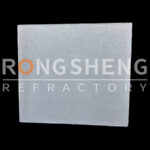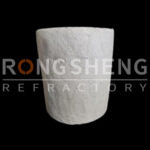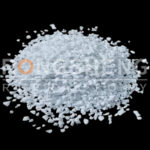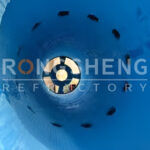Cement Kiln Bricks Description
Cement kiln refractory bricks’ service life can directly affect operating rate and clinker output of cement kiln. The working period of new type dry cement kiln refractory bricks should be no less than 10 months, refractory bricks consumption should be less than 500g/per ton clinker, or factors which will affect the service life of refractory bricks should be analyzed to improve the working condition and to prolong the service life.
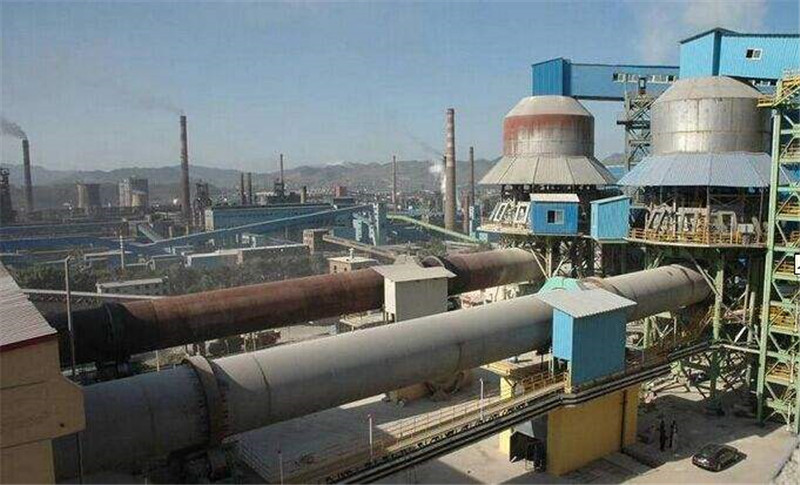
There are mainly 3 factors which can influence the service life of refractory bricks. First, the quality and configuration of refractory bricks, second, the production craft, third, storage condition and construction craft.
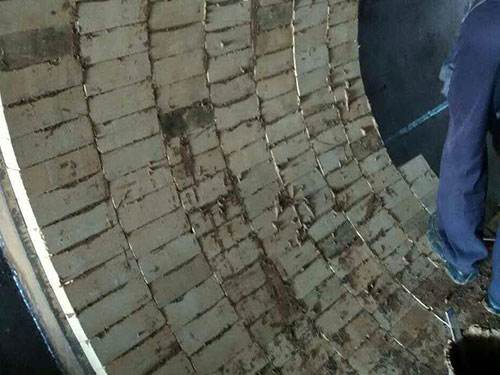
Choose high quality products and reasonable configuration is essential condition to ensure normal using of the cement kiln, appropriate storage and high quality masonry is reliable guarantee for long service life of refractory bricks. During production process, kiln inner lining bricks will suffer combined damage of mechanical stress and chemical stress, the reasons are:
Thermal Expansion Caused Squeezing Damage
When kiln temperature raised to certain extent, thermal expansion will generate pressure at kiln axis direction, and causes mutual squeezing of adjacent refractory bricks, once the pressure is higher than the strength of refractory bricks, refractory bricks will spall. In respect to this condition, following measures are taken: one is dry mason the fire bricks, setting reasonable side paper board, wet mason fire bricks should leave 2mm refractory mortar jointing. The other is setting appropriate inlet ending ring.
Steel Board Stress Damage
At the hot end of refractory bricks, steel board will react with MgO in magnesia bricks at high temperature and produce magnesia iron compound, which will cause volume expansion, squeeze refractory bricks and cause horizontal rupture. In light of this case, production method of refractory bricks’ tiling steel board should be improved or be replaced by refractory mortar.
Large Area Warp And Dislocation Of Refractory Bricks
Due to loose masonry, frequently open and cease of kiln, deformation of kiln cylinder, kiln cylinder and lining bricks’ cold end will have relative motion and cause lining bricks’ warp and dislocation, surface crack and defected corner. To cope with this situation, firstly, refractory bricks should be firmly piled during masonry, lock bricks should be tightly locked and wedge iron should be twice added. Secondly, stable thermal working condition should be kept. Third, deformation part of kiln cylinder should be smoothed by high temperature plastic refractory. Forth, kiln cylinder ovality should be inspected and adjusted timely. If ovality exceeds 1/10 of kiln’s diameter, sub-plate should be changed or sizing block should be added and adjust wheel belt gap.
RS Kin Refractory Factory Your Best Choice for Refractory Material
RS Kiln Refractory main business includes: research & develop, production as well as sales of monolithic and shaped refractory materials. For the last 20 years, RS kiln Refractory has provided numerous refractory products and technical service for customers in Southeast Asia, Africa, Europe and North America. RS Refractory main products include all kinds of refractory bricks, castable, refractory cement & concrete, ceramic fiber material, graphite electrode and so on, widely used in iron and steel, nonferrous metal smelting, chemical industry, electric power, machinery, and other industries.
